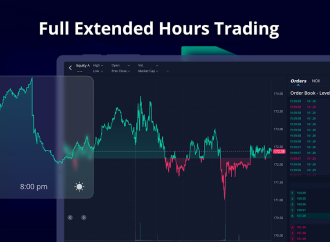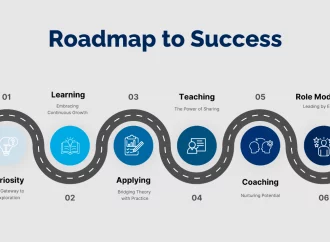Are you tired of feeling like your vote doesn’t count? Do you ever wonder why certain politicians seem to remain in power despite low approval ratings? The answer may lie in redistricting, also known as gerrymandering. This process allows political parties to manipulate voting districts to their advantage, effectively choosing their own voters and ensuring
Are you tired of feeling like your vote doesn’t count? Do you ever wonder why certain politicians seem to remain in power despite low approval ratings? The answer may lie in redistricting, also known as gerrymandering. This process allows political parties to manipulate voting districts to their advantage, effectively choosing their own voters and ensuring electoral success. But don’t despair – the power of the pen can be used for good as well. In this blog post, we’ll explore how communities can fight back against unfair redistricting practices and ensure a fair voice in our democracy.
The Process of Redistricting
The process of redistricting is a complicated one that can have a profound impact on election outcomes. The most common type of redistricting is congressional redistricting, which occurs every ten years following the release of the Census Bureau’s decennial census data. State legislatures are responsible for drawing congressional district boundaries, and the party in power often uses this opportunity to gerrymander districts in order to advantage their party and incumbents.
The process of gerrymandering often results in oddly shaped districts that bear little resemblance to geographic reality. This can have the effect of diluting the voting power of certain groups of people, particularly those who live in areas that are not politically competitive. Gerrymandered districts also tend to be more polarized, as the lines are drawn in such a way as to create safe seats for each party. This can lead to more extreme candidates being elected, as there is less incentive to moderate one’s views when running in a safe seat.
While gerrymandering is often used to advantage the party in power, it is important to note that both parties engage in this practice when they have the opportunity. Redistricting will continue to be an important issue in American politics, and its impact should not be underestimated.
The Impact of Redistricting on Election Outcomes
Redistricting can have a significant impact on election outcomes. In fact, it can be the deciding factor in close races. This is because redistricting can change the balance of power in a state or district.
For example, let’s say that State A has two congressional districts. District 1 is predominantly urban, while District 2 is predominantly rural. The majority of the state’s population lives in District 1.
Now, let’s say that the state legislature redraws the district lines. They make District 1 smaller and District 2 larger. The result is that the majority of the state’s population now lives in District 2.
This change will likely have a significant impact on future election outcomes in the state. This is because the party that controls the state legislature will now have an advantage in elections. The party that controls the legislature will be able to draw district lines that favor their candidates. As a result, they are more likely to win elections.
This example illustrates how redistricting can influence election outcomes. Redistricting can be used to advantage one party over another. It can also be used to protect incumbents or to help challengers mount competitive campaigns.
Examples of How Redistricting Has Influenced Election Outcomes
When it comes to election outcomes, redistricting can have a significant impact. For example, in the 2012 presidential election, Barack Obama won the popular vote by nearly 5 million votes, but due to the way electoral districts were drawn, he only won by a margin of 33 electoral votes. This is because Republican-controlled state legislatures redrew many district lines in a way that benefited their party.
Similarly, in the 2018 midterm elections, Democrats won the popular vote for the US House of Representatives by nearly 9 million votes, but Republicans retained control of the chamber due to gerrymandering. In fact, an analysis by FiveThirtyEight found that Republicans would have needed to win the popular vote by 11 percentage points to have a good chance of retaining control of the House under fair redistricting.
So while winning the most votes doesn’t always mean winning an election, it’s clear that redistricting can have a major impact on who ends up in power.
The Future of Redistricting
With the advent of new technologies, redistricting is likely to become even more influential in election outcomes. Computer-aided mapping has made it possible to draw district lines with ever-greater precision, and data-rich demographic databases allow mapmakers to target specific voters with greater accuracy than ever before.
As a result, redistricting is likely to become even more important in determining the outcome of elections. In particular, gerrymandering – the practice of drawing district lines to benefit one party or group at the expense of another – is likely to become even more prevalent. This could have a major impact on the balance of power in Congress and state legislatures, as well as on the outcome of presidential elections.
So far, courts have been largely unwilling to intervene in cases of alleged gerrymandering. But if this practice becomes more widespread and blatant, there may be increasing pressure on the judiciary to step in and take action. In any case, redistricting is likely to remain a highly controversial and polarizing issue for the foreseeable future.
Conclusion
Redistricting is a powerful tool that can be used to influence election outcomes and shape our political landscape. The ability to draw boundaries in a way that favors one party or another has been used by the majority party for decades, but it has become even more important with the rise of technology and data-driven approaches to redistricting. By understanding how redistricting works, we can make informed decisions about who should represent us in government, so that everyone’s voices are heard.





















Leave a Comment
Your email address will not be published. Required fields are marked with *